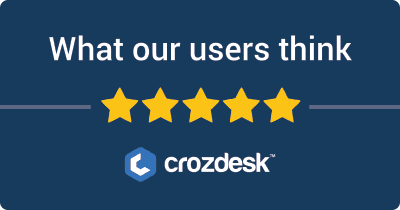
Introduction
Amplitude and Hotjar are two widely used analytics tools that serve distinct purposes in understanding user behavior and enhancing digital experiences.
Main Purposes:
- Amplitude is primarily designed for product analytics, helping teams track user interactions with their products and making data-driven decisions to optimize user engagement and retention.
- Hotjar, on the other hand, focuses on qualitative insights, offering features such as heatmaps and session recordings to visualize how users interact with web pages, helping to improve user experience and conversion rates.
User Considerations:
Users often choose Amplitude for its robust data analysis capabilities and ability to scale with product demands. In contrast, Hotjar is favored for its straightforward usability and rich visual feedback functions, making it easier to pinpoint specific user issues on websites.
Comparison Aspects:
When evaluating these tools, users should consider:
- Features: The range of analytics tools and visualizations each platform offers.
- Pricing: The cost structure and whether it aligns with the user’s budget.
- Ease of Use: User interface and the learning curve associated with each tool.
This comprehensive comparison will assist users in determining which tool best fits their analytics needs.
Amplitude VS Hotjar: Which tool is the most popular?
| Tool | Number of Reviews | Average Rating | Positive | Neutral | Negative |
|---|---|---|---|---|---|
| Amplitude | 32 | 3.17 | 19 | 2 | 11 |
| Hotjar | 10 | 2.5 | 4 | 0 | 6 |
Amplitude is the most popular tool based on the number of reviews, with 32 total reviews and a higher average rating of 3.17. Hotjar, with only 10 reviews and a lower average rating of 2.5, is the least popular tool in this summary.


Amplitude and Hotjar: Quick Comparison Overview
| Feature/Aspect | Ahrefs | SEMrush |
|---|---|---|
| Primary Features | – Site Explorer – Keyword Explorer – Backlink Checker – Content Explorer – Rank Tracker |
– Keyword Research – Site Audit – Position Tracking – Content Analyzer – Marketing Insights |
| Target Audience | – SEO professionals – Digital marketers – Agencies focusing on content marketing and backlink analysis |
– Digital marketers – SEO experts – Content marketers – Social media marketers and PPC specialists |
| Main Advantages | – Robust backlink analysis – Comprehensive keyword data – Intuitive user interface – Constantly updated index |
– All-in-one digital marketing tool – Extensive competitor analysis – Wide array of tools for SEO and PPC – Integrated social media management |
| Core Value Proposition | Focused on providing in-depth SEO insights, particularly strengths in backlink profiles and organic keyword rankings. Ideal for users prioritizing content strategy and link-building efforts. | Offers a holistic view of digital marketing, making it easier to manage all aspects of online presence through an extensive range of tools for SEO, PPC, and social media marketing. |
| Ideal Use Cases | – Conducting comprehensive link audits – Developing effective content strategies – Tracking backlinks and organic rankings – Keyword planning for SEO campaigns |
– Managing and optimizing PPC campaigns – Conducting competitive analysis for market positioning – Comprehensive content analytics and SEO tracking – Social media metrics and management |
Most liked vs most disliked features of Amplitude and Hotjar
| Tool | Most Liked Features | Most Disliked Features |
|---|---|---|
| Amplitude | – Overall user experience is highly praised as an "amazing platform" and "user-friendly." | – Difficulty in moving data in and out of Amplitude is frustrating for some users. |
| – Extensive free plan benefits small businesses and startups with powerful analytics tools at no cost for an extended time. | – Advanced features can be overwhelming for users without strong analytical backgrounds. | |
| – Deep analytical capabilities aid in gaining insights into user behavior and product usage. | – Unclear pricing structures for different subscription tiers. | |
| – Reliable customer service enhances the overall experience. | – Limited dashboard customization options noted by some users. | |
| – Frequent improvements and updates keep the platform in line with evolving analytics needs. | – Challenges in accessing customer support for cheaper subscription plans. | |
| Hotjar | – Quick and effective support for resolving issues is highly regarded. | – Recent price increases have led to significant dissatisfaction among users. |
| – Helps in understanding user interactions which enhances website performance. | – Documentation and user interface require improvements for better usability. | |
| – Easy to use with straightforward integration. | – Difficulties capturing user behavior analytics in specific areas of websites. | |
| – Provides valuable insights with a suite of tools like heatmaps and surveys. | – Discrepancies noted between advertised session limits and actual performance. | |
| – Serves its intended purpose effectively by aiding thorough analysis. | – Long-term users have expressed disappointment over the shift in company focus and values. |
Key Features of Amplitude vs Hotjar
Certainly! Here’s a comparison of the key features of Amplitude and Hotjar, along with how each feature benefits users and any unique aspects offered by each brand:
Amplitude
1. Behavioral Analytics
- Benefit: Amplitude allows users to track and analyze user behavior across multiple platforms. This helps teams understand user journeys, identify drop-off points, and optimize the user experience.
- Unique Aspect: Amplitude specializes in providing deep insights into user behavior through cohort analysis and retention tracking, making it suitable for businesses focused on long-term engagement.
2. Advanced Segmentation
- Benefit: Users can segment their audience based on various criteria such as demographics, behaviors, and events. This enables targeted marketing strategies and personalized experiences.
- Unique Aspect: Amplitude’s robust segmentation capabilities allow for real-time analysis, enabling businesses to quickly react to user behavior changes.
3. Funnel Analysis
- Benefit: Users can create funnels to visualize user pathways towards specific goals, helping identify areas in need of improvement in the conversion process.
- Unique Aspect: Amplitude’s visual funnel analysis includes the ability to compare conversion rates over time, observing how changes affect user journeys.
4. Retention Tracking
- Benefit: Amplitude provides retention metrics that help businesses understand how well they keep users engaged over time, highlighting opportunities for improvement.
- Unique Aspect: This feature allows for cohort comparisons, giving insights into how different groups of users engage and retain over various periods.
5. A/B Testing
- Benefit: Users can experiment with different approaches and analyze which variations lead to better engagement or conversion rates.
- Unique Aspect: Amplitude offers integration with experimentation tools, making it easier to link insights from analytics with performance outcomes.
6. Dashboarding and Reporting
- Benefit: Amplitude allows users to create customized dashboards for tracking metrics that matter most to their business, ensuring relevant data is always at hand.
- Unique Aspect: The ease of creating reports and dashboards provides a user-friendly way for teams to visualize data without needing extensive technical skills.
Hotjar
1. Heatmaps
- Benefit: Hotjar’s heatmaps visually represent where users click, scroll, and move, allowing businesses to see how users interact with their website.
- Unique Aspect: This feature helps identify areas of a site that attract attention versus those that are neglected, guiding design and layout improvements.
2. Session Recordings
- Benefit: Users can watch recorded sessions of real users navigating their site, providing detailed insights into user behavior and experience.
- Unique Aspect: The ability to view actual recordings of user sessions allows businesses to identify specific pain points and improve usability based on direct observation.
3. Surveys and Feedback Polls
- Benefit: Hotjar enables users to create custom surveys and feedback polls to directly gather insights from users about their experience, preferences, and pain points.
- Unique Aspect: This feature provides qualitative data, adding context to the quantitative data collected through heatmaps and sessions.
4. Conversion Funnels
- Benefit: Users can analyze where visitors drop off in their conversion paths, helping identify critical usability issues or friction points in the user journey.
- Unique Aspect: Hotjar’s funnel analysis combines quantitative data with qualitative insights from user feedback, enriching the understanding of user journeys.
5. User Segmentation
- Benefit: Users can segment feedback based on various criteria, allowing for targeted analysis and tailored experiences based on different user groups.
- Unique Aspect: Hotjar segments users based on their behavior and interactions, making it easier to develop targeted strategies.
6. Integrations
- Benefit: Hotjar integrates with various platforms and tools, enhancing workflow and enabling users to consolidate data across systems.
- Unique Aspect: The range of integrations allows users to pull in different metrics and analyze them together with Hotjar’s insights, creating a holistic understanding of user behavior.
Summary
Amplitude excels in quantitative behavioral analytics, deep user segmentation, and retention tracking, focusing on long-term user engagement. This makes it an ideal tool for companies aiming to optimize their products based on user behavior data.
Hotjar, on the other hand, offers visual behavioral data through heatmaps, session recordings, and direct user feedback, making it more centered on immediate user experience improvements. Its emphasis on qualitative feedback helps businesses understand the “why” behind user actions.
Choosing between the two tools largely depends on whether the priority is on in-depth analytical capabilities or understanding user experience through direct observations and feedback.
Amplitude vs Hotjar Pricing Comparison
| Feature/Plan | Amplitude Pricing | Hotjar Pricing |
|---|---|---|
| Free Tier | Free for up to 10 million events/month | Free for up to 1,000 pageviews/day |
| Basic Plan | Monthly: $995 | Monthly: $39 |
| Annual: $8,388 ($699/month) | Annual: $390 ($32.50/month) | |
| 10 million events/month, unlimited users | 3,000 pageviews/day, unlimited users | |
| Essential product analytics features | Basic heatmaps, session recordings | |
| Growth Plan | Monthly: $2,995 | Monthly: $99 |
| Annual: $29,880 ($2,490/month) | Annual: $990 ($82.50/month) | |
| 50 million events/month, unlimited users | 10,000 pageviews/day, unlimited users | |
| Advanced analytics, data governance features | Advanced heatmaps, conversion funnels | |
| Enterprise Plan | Custom pricing based on usage | Custom pricing based on needs |
| Tailored features such as machine learning | Tailored offerings for larger teams | |
| Dedicated customer success manager | Priority support | |
| Free Trial | No free trial available | 14-day free trial available |
| Discounts | No specific discounts mentioned | Annual subscriptions save up to 25% |
| Non-profit discount available | ||
| Main Differences | Amplitude focuses on event-based analytics and product development; designed for larger organizations needing detailed data insights. | Hotjar emphasizes user experience with tools like heatmaps and session recordings, ideal for smaller businesses and website optimization. |
Support Options Comparison: Amplitude vs Hotjar
| Support Option | Amplitude | Hotjar |
|---|---|---|
| Live Chat | Available for Pro and Enterprise users. | Available for all users, with a focus on quick responses. |
| Phone Support | Available for Enterprise users with dedicated support. | Not available; primarily relies on other support channels. |
| Documentation | Comprehensive knowledge base with guides and tutorials available at various levels. | Extensive documentation, including FAQs and troubleshooting tips. |
| Webinars/Tutorials | Offers live and recorded webinars covering product features and best practices. | Provides tutorials and guides, but live webinars are less emphasized. |
Unique Features of Amplitude Vs Hotjar
| Feature | Amplitude | Hotjar | Value Added |
|---|---|---|---|
| Event Tracking | Allows tracking of user interactions as discrete events with multi-dimensional analysis. | Provides heatmaps that visualize user interactions on websites. | Event tracking enables businesses to understand user behavior in detail, while heatmaps visually represent how users engage with the interface. |
| Behavioral Cohorts | Allows segmentation of users based on their behavior, enabling targeted analysis. | Feedback polls and surveys provide direct user insights. | Behavioral cohorts help in identifying user trends, while feedback tools ensure direct communication with users, further informing product decisions. |
| Pathfinder Analysis | Enables users to visualize the journey of customers through different events on a platform. | Provides session recordings that allow for viewing complete user sessions. | Pathfinder analysis reveals common user paths for optimization, while session recordings give practical insight into user behavior and potential friction points. |
| Advanced Integrations | Seamless integration with various tools to unify data sources and improve insights. | Integrates customer feedback and behavior analytics in one platform. | Advanced integrations enable comprehensive data analysis, while combining feedback with behavior analytics helps in making more informed product improvements. |
| User Flows and Funnel Analysis | Allows deep analysis of conversion funnels to identify drop-off points and optimize user journeys. | Conversion funnels displayed through heatmaps to visualize performance. | Funnel analysis pinpoints areas of user drop-off for effective conversion optimization, while visualization paired with data analytics provides additional insights. |
| Predictive Analytics | Uses machine learning to predict user behavior and future trends based on historical data. | N/A | Predictive analytics can significantly inform strategic planning and decision-making, enabling proactive adjustments to marketing and product strategies. |
| Retention & LTV Analysis | Comprehensive tools for analyzing user retention and estimating lifetime value (LTV). | N/A | Retention and LTV analysis is critical for understanding long-term user engagement and value, guiding business growth strategies. |
Amplitude’s unique features center around detailed behavioral analytics and predictive capabilities, thus providing deeper insights into user interactions and future trends. Hotjar, on the other hand, stands out with its direct user feedback tools and visual engagement insights through heatmaps and session recordings. These features offer significant value by helping organizations make user-centered decisions, optimize user experiences, and strategically align products with customer needs.


